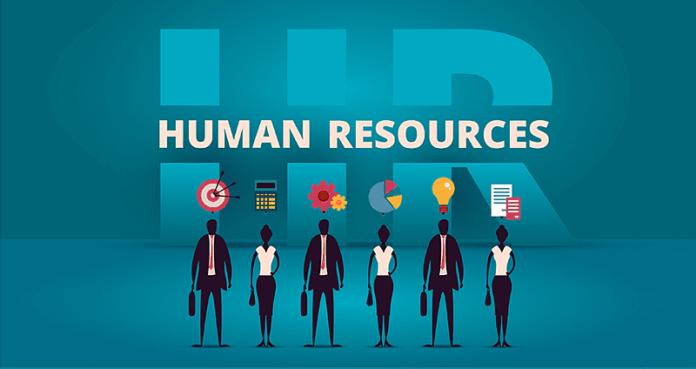Human Resource is at the bleeding edges of employers’ reaction to the COVID-19 emergency. The emergency is driving pretty much every business to quickly create, adjust or improve remote work strategies and methods.
As Human Resource professionals battle to keep employees sheltered and educated, it assists with contemplating what changes will be progressively lasting and how you’ll direct workers and organizational leadership concerning those changes. Here are important impacts that you’ll likely be managing long after things come back to “normal.”
Remote work will be a lasting feature for many companies.
Now, remote working is something to be thankful for, because as working staff is moving to remote briefly as we weather this emergency, many will keep working remotely in any event part of the time after organizations re-open their doors.
Fortunately, for most managers, the communication and technology required for effective remote work are accessible to employees.
But, Human Resource needs to begin presently, teaming up intimately with Finance, IT, and different office departments to create and actualize a new set of rules. Among the essential questions that should be tended to:
- How will Human Resource managers decipher existing work rules, meeting timetables, and communication methodologies to the new reality?
- Who will pay for telecommuters’ availability and any necessary gear, similar to printers, screens, headset, and so forth.?
- How will you recover everything if somebody stops or is terminated?
- How must sets of expectations change to suit part-or full-time remote work?
- How will you screen and enforce employee’s attendance?
And, meanwhile, HR’s job in observing and keeping up spirit turns out to be considerably progressively pivotal.
It is a smart thought to make a proper procedure for checking in with remote employees to ask how they are managing the additional worry during the emergency — and to keep on any issues after things come back to new normal.
Are they keeping in contact with their managers and colleagues? Do they need anything to help remain productive? Are they available on accessible enthusiastic health resources and how to get to them?
It will likewise turn out to be clear over the coming weeks that jobs are impossible viably offsite. You’ll have to begin on emergency courses of action and work policies for those, too.
Company Culture gets more testing in scattered working environments
Business leaders and workers tell specialists they accept well-defined and a strong organizational culture is basic to long term achievement.
It sets the company’s identity, helps in forming its mission, and gives employees at all levels a feeling of personality and their work purpose. In any case, culture is additionally defenseless in the midst of emergency when choices are being made on the fly and financial endurance takes need over nearly everything else.
Tragically, culture is additionally difficult to robotize — there is no advanced solution that can safeguard and improve organizational culture. Employee commitment, steady correspondence and showed duty to your way of life by authority are the main tools that will work.
Furthermore, workers will identify empty talk in any event, when they’re working remotely and will recollect it after the emergency passes. It is difficult to put culture at the highest point of HR’s need list while you are extinguishing fires each day. In any case, if anything, culture is significantly progressively significant now and can hold your association together over the long haul.
Talent Acquisition Remains Critical
With the critical financial effects of the COVID-19 pandemic turning out to be more clear by the time, organizations and entire businesses are laying off specialists and freezing employing.
That may require a more prominent dependence on contractual workers and temp working staff in the beginning periods of the possible recovery. But, organizations’ reputations among the applicants you’ll require longer-term will rely upon how they are treated during this emergency.
That may mean recruiting a few representatives back as 1099 contractual workers temporarily or helping them join up with hiring agencies.
Indeed, even amidst this vulnerability and disturbance, it’s a smart thought to keep your talent and skill pipeline full and keep in touch with imminent rehires and recently recruited employees.
Drawing in a remote workforce
Keeping workforce enthused, engaged, and productive is one of HR’s most important jobs and, regularly, one of your group’s superpowers.
Furthermore, research clarifies that employees who feel that their physical and enthusiastic prosperity is a genuine need for the companies they work for are increasingly locked in.
That converts into genuine money.
Professional research shows that exceptionally engaged teams:
- produce considerably better results
- treat clients better and pull in new ones, and
- are bound to stay with their company than the individuals who are less locked in.
Engaged workers are additionally more beneficial, and less inclined to experience burnout.
You can show employees at home you are focused on their prosperity by modifying benefits.
An incredible prompt step is to diminish or dispose of copays for telehealth visits. If you don’t as of now incorporate emotional wellness discussions as a major aspect of your telehealth plan, include it now.
Also, with financial pressure affecting pretty much every representative, it is a decent an ideal opportunity to explore alternatives like day by day pay, sponsored and subsidized loans, and free access to financial education online classes.
Employees’ loyalty to your laborers amid phenomenal pressure and disarray will return to you through their progressing loyalty and commitment to your main goal.
Read Also: Buying Scrap Gold: How it Works
To conclude, taking a powerful move expects HR leaders to conduct advanced planning and arrangement ahead of time and settle on vital administration decisions, all of which will depend vigorously on the guidance and understanding no one but HR can give.






































